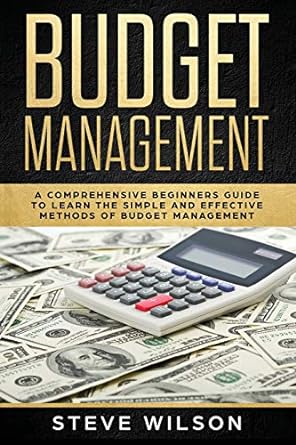Answered step by step
Verified Expert Solution
Question
1 Approved Answer
In its first year of operations a company produced and sold 71,600 units of Product A at a selling price of $36 per unit and
In its first year of operations a company produced and sold 71,600 units of Product A at a selling price of $36 per unit and 19.100 units of Product B at a selling price of $56 per unit. Additional information relating to the company's only two products is shown below. Direct materials Direct labor Manufacturing overhead Cost of goods sold Product A $444,300 Product 8 $254,900 $ 216,000 $112,000 Total $699,200 328,000 616,000 $ 1,643,200 The company created an activity-based costing system that allocated its manufacturing overhead costs to four activities as follows Activity Cost Pool (and Activity Measure) Machining (machine-hours) Manufacturing Overhead Activity Product A Product B Total $ 215,100 98,000 64,100 162,100 Setups (setup hours) Product design (number of products) 159,100 121,600 91 460 551 1 1 2 Other (organization-sustaining costs) 120,200 NA NA NA Total manufacturing overhead cost $ 616,000 The company's ABC implementation team also concluded that $58,000 and $116,000 of the company's advertising expenses could be directly traced to Product A and Product B, respectively. The remainder of its selling and administrative expenses ($416.000) was organization-sustaining in nature If the company uses a traditional cost system that relies on plantwide overhead allocation based on direct labor dollars, what is the total gross margin (or product margin) earned by Product A? Note: Round your intermediate calculations to 2 decimal places. In its first year of operations a company produced and sold 70,000 units of Product A at a selling price of $20 per unit and 17,500 units of Product B at a selling price of $40 per unit. Additional information relating to the company's only two products is shown below. Direct materials Product A $ 436,300 Product B $251,700 Direct labor $ 200,000 $ 104,000 Manufacturing overhead Cost of goods sold Total $ 688,000 304,000 608,000 $ 1,600,000 The company created an activity-based costing system that allocated its manufacturing overhead costs to four activities as follows: Activity Cost Pool (and Activity Measure) Machining (machine-hours) Setups (setup hours) Product design (number of products) Other (organization-sustaining costs) Total manufacturing overhead cost Manufacturing Overhead. $213,500 157,500 Activity Product A Product B Total 90,000 62,500 152,500 75 300 375 120,000 1 1 2 117,000 $608,000 NA NA NA The company's ABC implementation team also concluded that $38,500 and $111,500 of the company's advertising expenses could be directly traced to Product A and Product B, respectively. The remainder of its selling and administrative expenses ($400,000) was organization-sustaining in nature. The company's activity-based costing system would report a product margin for Product A of Note: Do not round your intermediate calculations
Step by Step Solution
There are 3 Steps involved in it
Step: 1

Get Instant Access to Expert-Tailored Solutions
See step-by-step solutions with expert insights and AI powered tools for academic success
Step: 2

Step: 3

Ace Your Homework with AI
Get the answers you need in no time with our AI-driven, step-by-step assistance
Get Started


